Seafood in season in Feb (No.2)
Table of contents
1. 4th place Hyogo prefecture (6 types)
2. 5th place Miyagi prefecture (5 types)
3. 5th place Ibaraki prefecture (5 types)
4. 5th place Fukuoka prefecture (5 types)
5. 5th place Nagasaki Prefecture (5 types)
1. 4th place Hyogo prefecture (6 types)
Hyogo Prefecture (6 types of fish and shellfish) was ranked 4th in the prefectures with the highest catches and types of fish and shellfish that are in season in February.
In Hyogo prefecture, the following 6 types of fish and shellfish will be in season in February.
Fish
flatfish, sea bream
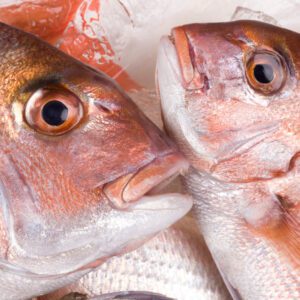
Shellfish
oyster
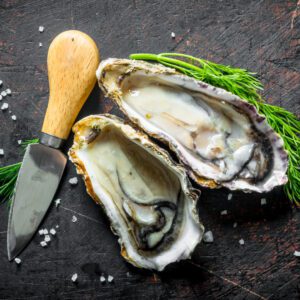
Other seafood
spear squid, snow crab, laver
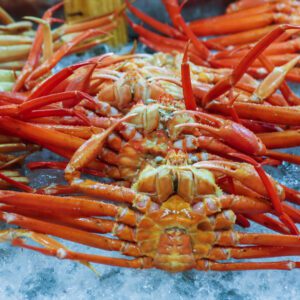
“PRIDE FISH”
Japan Fisheries Co-operative has selected “Hyogo Flathead flounder” (season: December-March), “Hyogo laver” (season: December-May), and “1 year oysters from Harima Nada” (season: December-February) for “PRIDE FISH” in winter in Hyogo Prefecture. In addition, “Ikanago (sand lance) in the Seto Inland Sea” (season: February-April) and “Hyogo Hatahata (Japanese sandfish)” (season: February-April) have been selected for “PRIDE FISH” in the spring of Hyogo Prefecture.
Flathead flounder is a fish caught in the Sea of Japan in Hyogo Prefecture. It can be caught not only in Hyogo prefecture, but also in Hokkaido, Fukui prefecture, Shimane prefecture, etc. In Fukui Prefecture, “Echizen Garei (Flathead flounder)” (season: October-December) has been selected as the “PRIDE FISH” in the fall. The recommended dish of “Hyogo Flathead flounder” is boiled, but you can also eat it with sashimi, grilled salt, and meuniere.
Hyogo laver grows in the Seto Inland Sea, where the tide is fast, such as the Akashi Strait. Hyogo laver, which grows in the same sea area as Akashi red sea bream and Akashi octopus, contains a lot of amino acids that are the source of deliciousness.
Oysters are cultivated in Harima Nada such as Ako and Murotsu. Oysters usually take a couple of years to ship. However, Harima Nada oysters are called “1 year oysters” because they grow to the shipping size in 1 year due to their abundant nutrients and production control. It has the characteristics of being easy to eat without the odor peculiar to oysters and not shrinking easily even when heated.
Ikanago (sand lance), which announces the arrival of spring on the coast of the Seto Inland Sea in Hyogo Prefecture, is famous nationwide as a “Kugi-ni (sand lance simmered in soy)”. It is said that the reason why “Ikanago no Kugi-ni” spread throughout Japan was that the sufferers of Hyogo gave it to various parts of Japan in return for their support during the Great Hanshin-Awaji Earthquake in 1995.
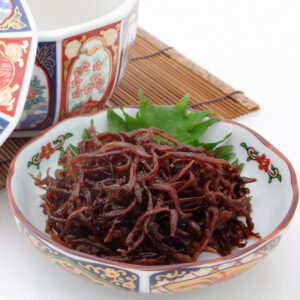
Hatahata (Japanese sandfish) is famous from Akita prefecture, but it can also be caught on the Sea of Japan side of Hyogo prefecture. Moreover, Hyogo Prefecture will be the number one catch in Japan in 2020. The catch of Hatahata in Akita prefecture is the third highest in Japan (the same as Ishikawa prefecture). However, the Hatahata caught in Hyogo Prefecture do not have eggs because they migrate from the Korean Peninsula. I ate Hatahata in Akita prefecture in December 2021, and I would like to compare it with Hatahata from Hyogo prefecture.
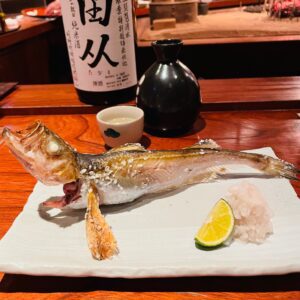
2. 5th place Miyagi prefecture (5 types)
Miyagi Prefecture (5 types of fish and shellfish) was ranked 5th in the prefectures with the highest catches and types of fish and shellfish that are in season in February. In addition, Ibaraki, Fukuoka, and Nagasaki prefectures are ranked 5th in 5 types of fish and shellfish.
In Miyagi prefecture, the following five types of fish and shellfish are in season in February.
Fish
shark, flounder
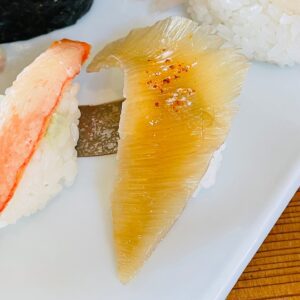
Shellfish
oyster, scallop
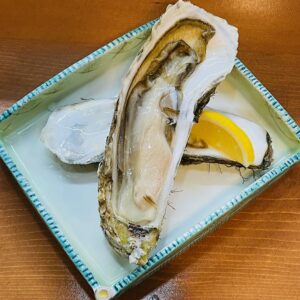
Other seafood
laver
“PRIDE FISH”
As I introduced before, Japan Fisheries Co-operative has selected “Oysters with shells of Miyagi” (season: November-March) for the winter “PRIDE FISH” in Miyagi Prefecture. I introduced “Oyster with shell of Miyagi” before, so I will not explain it this time.
3. 5th place Ibaraki prefecture (5 types)
Ibaraki Prefecture (5 types of fish and shellfish) was ranked 5th in the prefectures with the highest catches and types of fish and shellfish that are in season in February. In addition, Miyagi, Fukuoka, and Nagasaki prefectures are ranked 5th in 5 types of fish and shellfish.
In Ibaraki Prefecture, the following five types of fish and shellfish are in season in February.
Fish
monkfish, Japanese icefish, pond smelt
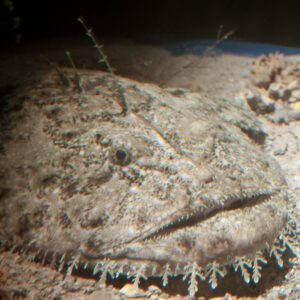
Shellfish
freshwater clam, hard clam
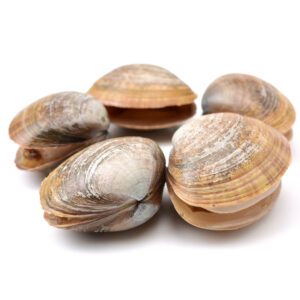
“PRIDE FISH”
The National Federation of Fisheries Cooperatives has selected “PRIDE FISH” in winter in Ibaraki Prefecture, “Ibaraki monkfish” (season: December-February) and “Ibaraki Joban Masaba (chub mackerel)” (season: November-January).
Ibaraki Prefecture was the second largest catch in Japan in 2020 (1st place is Hokkaido, 3rd place is Nagasaki Prefecture). The characteristic of Ibaraki prefecture is that 96% of the catch is purse seine fishing. Considering that the national average of purse seine fishing is 42%, it can be seen that the high purse seine fishing ratio in Ibaraki Prefecture is remarkable. Purse seine fishing is a fishing method for catching fish that migrate in large groups such as mackerel, sardines, and horse mackerel. In 2020, Ibaraki Prefecture’s catch will be No. 1 in Japan for sardines and No. 3 in Japan for mackerel.
“Ibaraki monkfish” is famous as a fish in Ibaraki prefecture nationwide and was selected as “PRIDE FISH”, but the catch of monkfish is the 4th in the whole country. I was very surprised because I thought Ibaraki Prefecture had an overwhelmingly high catch of monkfish. The first place is Yamaguchi Prefecture.
This may be due to the fact that the number of monkfish itself is small off the coast of Ibaraki, but it may be related to the fact that monkfish fishing is mainly carried out by bottom trawling. As mentioned above, purse seine fishing is overwhelmingly common in Ibaraki prefecture, and it is not suitable for fishing for monkfish that live in the deep sea.
It seems that the season of “Ibaraki Joban’s chub mackerel” will end in January. However, I think you can eat delicious “chub mackerel” even in February. The seasonal and greasy “chub mackerel” grilled with salt seems to be exquisite. The catch of mackerel in Ibaraki Prefecture will be the third highest in Japan in 2020. The first place is Hokkaido and the second place is Kochi prefecture. However, if we limit it to “chub mackerel”, it is No. 1 in Japan.
4. 5th place Fukuoka prefecture (5 types)
Fukuoka Prefecture (5 types of fish and shellfish) was ranked 5th in the prefectures with the highest catches and types of fish and shellfish that are in season in February. In addition, Miyagi, Ibaraki, and Nagasaki prefectures are ranked 5th in 5 types of fish and shellfish.
In Fukuoka Prefecture, the following five types of fish and shellfish are in season in February.
Fish
spanish mackerel, sea bream, blowfish
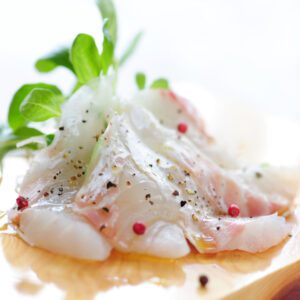
Shellfish
asari clam
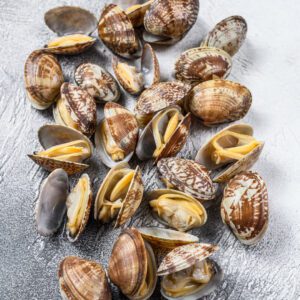
Other seafood
laver
“PRIDE FISH”
Japan Fisheries Cooperatives has selected “Oyster of the Chikuzen Sea“ (season: November-March) as “PRIDE FISH” in winter in Fukuoka Prefecture. I introduced “Oyster of the Chikuzen Sea” before, so I will not explain it this time.
5. 5th place Nagasaki Prefecture (5 types)
Nagasaki Prefecture (5 types of fish and shellfish) was ranked 5th in the prefectures with the highest catches and types of fish and shellfish that are in season in February. In addition, Miyagi, Ibaraki, and Fukuoka prefectures are ranked 5th in 5 types of fish and shellfish.
In Nagasaki Prefecture, the following five types of fish and shellfish are in season in February.
Fish
sea bream, flounder, Japanese amberjack

Shellfish
asari clam
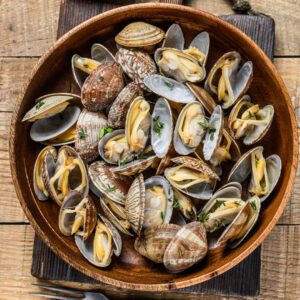
Other seafood
spear squid
“PRIDE FISH”
Japan Fisheries Cooperatives has selected “Nagasaki cultured bluefin tuna” (season: November-February) and “Nagasaki Torafugu (cultured tiger puffer)” (season: November-March) as “PRIDE FISH” in winter in Nagasaki Prefecture. We’ve introduced both before, so we won’t explain them this time.